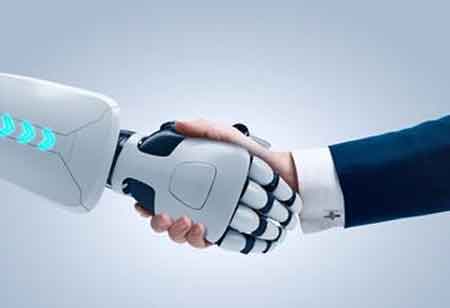THANK YOU FOR SUBSCRIBING
Be first to read the latest tech news, Industry Leader's Insights, and CIO interviews of medium and large enterprises exclusively from Hrtech Outlook
THANK YOU FOR SUBSCRIBING

By
HR Tech Outlook | Monday, September 15, 2025
Stay ahead of the industry with exclusive feature stories on the top companies, expert insights and the latest news delivered straight to your inbox. Subscribe today.
Fremont, CA: Automation has become a prominent trend in the HR industry, with Robotic Process Automation (RPA) emerging as a simple yet highly effective solution for streamlining repetitive HR tasks. RPA works by utilizing automated scripts, software agents, and bots to carry out tasks with exceptional accuracy and efficiency. It helps eliminate common human errors and those resulting from fatigue. In areas like payroll, where precision and data consistency are crucial, RPA offers significant potential for improvement. Compared to other enterprise solutions, RPA is more affordable and easier to implement. Given these benefits, could RPA-driven payroll be the future of HR?
Key benefits of RPA in payroll
Simplifying Data Collection - Gathering all of the data required for payroll processing has traditionally been one of the most time-consuming aspects of the payroll lifecycle. After gathering the data, it must be translated into a consistent format, with any changes between departments reconciled. It's no surprise that those payroll professionals are left running from pillar to post at the end of the month, attempting to keep bulky spreadsheets up to date before disbursement. RPA in payroll aids in the integration of diverse departmental processes into a unified solution. When new information is introduced to the system, it is automatically reformatted and revised.
Data Access Acceleration - Larger organizations, or even multi-site SMBs, must often share files between HR and finance, wait for information updates, export in various formats, and manually perform an upload or backup. Needless to say, this will take a significant amount of your time and money. Payroll RPA establishes a consistent source of reality in the company. Site-specific HR applications are closely integrated with the global payroll platform, resulting in a unified database that is open to all approved parties without the need for multiple levels of approval.
Data Validation Accuracy - Data validation can take hours or even days, as each field is cross-checked against cost records, benefits, taxation norms, and other criticalities. By automating this method, it is possible to remain consistent with organizational and regulatory payroll requirements without manually reviewing each and every sector. Users should set up business rules that are in line with organizational standards, specifying the appropriate tolerances or exceptions. The RPA bot will then validate the entire database, which will be activated by pre-defined events. Furthermore, there is no keystroke mistake, which eliminates the time spent correcting easily avoidable errors.
I agree We use cookies on this website to enhance your user experience. By clicking any link on this page you are giving your consent for us to set cookies. More info

However, if you would like to share the information in this article, you may use the link below:
www.hrtechoutlookeurope.com/news/transgorming-payroll-through-advanced-rpa-nid-1963.html



